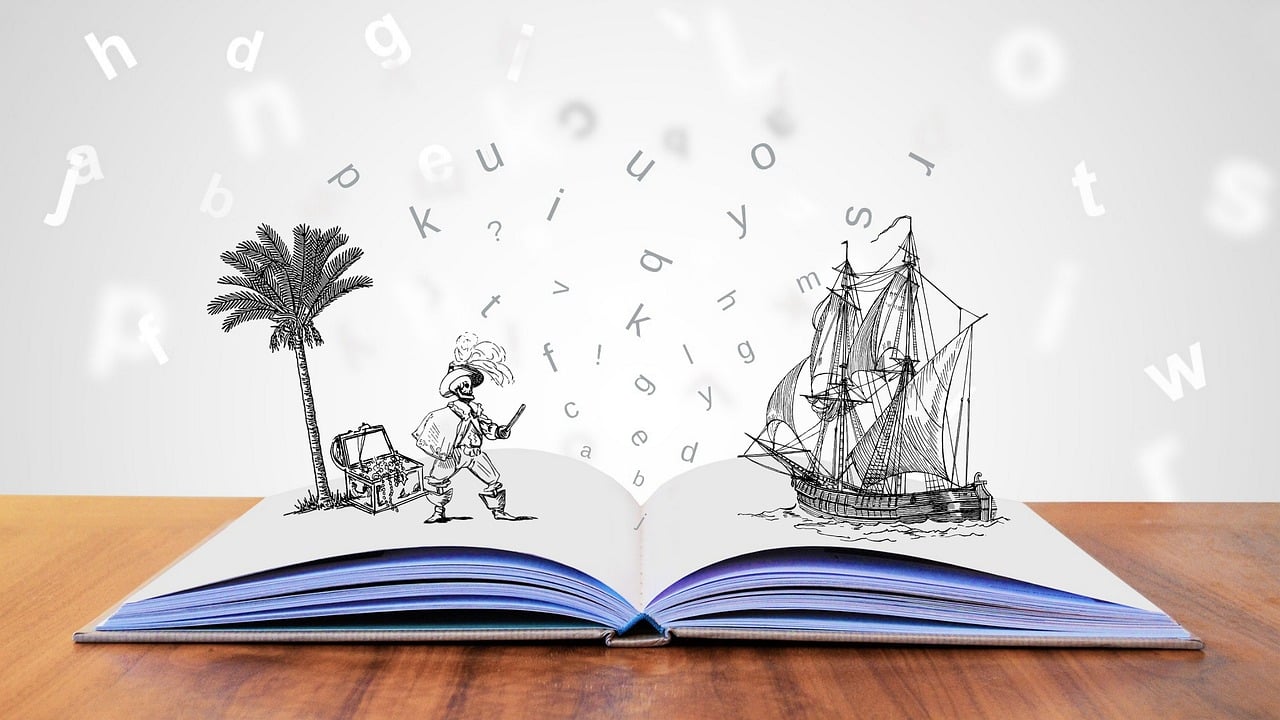Speed reading is a technique that aims to increase reading speed without sacrificing comprehension. By utilizing specific strategies, readers can process and comprehend information at a much faster rate. Techniques such as skimming, scanning, and chunking text help readers identify key points and main ideas swiftly. Eliminating subvocalization, the habit of silently pronouncing words, aids in accelerating reading pace.
Speed readers often use peripheral vision to encompass more words in a single glance, reducing the time spent on individual words. They focus on the material’s structure and use visual aids like finger tracking or pacer tools to maintain a steady pace. Speed reading fosters improved concentration, memory retention, and overall reading efficiency, making it an invaluable skill in today’s fast-paced world. Practicing regularly and gradually increasing reading speed helps enhance comprehension, making speed reading a valuable asset for students, professionals, and anyone seeking to process information more rapidly and effectively.
What is speed reading and example?
Speed reading is a technique that is used to increase reading speed without sacrificing comprehension. It involves training to read faster by eliminating unnecessary subvocalization (pronouncing each word in your mind), reducing fixations (pausing on each word), and expanding the eye span (taking in multiple words at a time). By implementing these techniques, individuals can read and comprehend texts more quickly.
Here’s an example:
Traditional reading speed: Let’s suppose it takes you 1 minute to read a page with 200 words, and you have a book of 300 pages. At the traditional reading speed, it would take you approximately 6 hours to complete the book. After implementing speed reading techniques, you are now able to read at a speed of 600 words per minute with the same level of comprehension. Thus, you can finish that same book in about 1 hour, significantly reducing the time needed to complete it.
In this post, I want to address ten of the most common speedreading mistakes I currently find with our students.
Ignoring PAO. A person performing an action on an object is the most common and intuitive form of visualization. One word within a text is typically not sufficient to convey meaning, 3 words are. The first word should be visualized as a person, the second as an action, the third as an object. Always use the simplest word for the action and the hardest for the object. When you need to remember numbers, do not use the professional 6-digits PAO: start with 10 people, 10 actions, 10 objects and upgrade only if you need to.
Choosing not enough words. When choosing words you need to visualize, do not choose one word per paragraph. Typically we need 6-12 words per paragraph. Write down the words you have chosen to visualize and try to recreate the text using just them. If you fail, you need more words.
Not rereading texts. To be honest 70% of the time I just pre read text, very fast (at 5000wpm 20% retention). Occasionally I reread the text for comprehension, slowly (at 1500wp 85% retention). Sometimes I still miss some key ideas, I skim the text focusing only on the information I need. Then I may want to memorize the structure of the text and I scan the text with my eyes (at 10000wpm 10% retention). This is just one of the average read speed strategies. I use ~10 different strategies based on the text. I cannot stress this enough: if you failed to understand or memorize the article, read again and read differently.
Using complex visualizations. Visualizations that are too elaborate are slow. Your visualizations need to be fast, so basically use the first spontaneous visual association you have. The first couple of weeks of training we encourage you to generate very specific visualizations to prime your mind into generating this sort of imagery. If your spontaneous visual associations are not good enough, you are welcome to repeat the training.
Reinventing visualizations. Most of the time for most of the situations we reuse the same visualizations as a sort of visual dictionary. Each word gets its own visualization. If you come up with a different visualization spontaneously, you are welcome to use it but do not force yourself to be original each time you have something to remember. You can distinguish between visualization by context within the PAO, mind map or memory palace you use. You can also add thematic details based on the subject of the text you read.
Suppressing subvocalization too early. When I learned with Anna she made sure I could memorize 20 words in 1 min before she allowed me to suppress subvocalization. If you speed up your reading before you can visualize faster than you speak, you will lose the text comprehension. With time your retention may catch up, or you may get used to reading texts without understanding them. This is a huge gamble.
Emphasis on speed rather than comprehension. You should be able to comprehend and remember what you read well before speeding up. If you take a text you do not understand, do not expect a speed reader to solve the problem. It is better to use the extra time to analyze the text and connect it to your body of knowledge than to read the text slowly. In any case comprehension and retention take priority higher than the speed, otherwise, while bother reading speed test the text?
Skipping note taking. Do take notes when you read the text. Use google sheets, a piece of paper or whatever works for you. You can do it at the end of a meaningful section or chapter or when you take the Pomodoro break. You will remember the thing you write down and review much better than the rest of the text.
Not stopping at the end of each section. At the end of each section of 2-3 paragraphs stop briefly and make sure you understand what you just read. Use the time for some intellectual activity: creative thinking about using the new information, critical thinking and facts-checking, organization of the new information in your head, emotional reaction to the content, technical analysis of the style. Choose one or two activities from the list. The activity needs to be meaningful and relevant to the new information you acquired by reading. A couple of sec are typically enough for meaningful processing of the text.
Not using the resources. We make resources for you to use because we think you really need them.
Do search this blog if you have a question: with more than 500 articles we have, it is very hard to find something otherwise.
Apply (mail to [email protected]) for the mobile app beta testing: the experience is significantly better than using the website.
See if you can find articles you enjoy in https://www.reddit.com/r/keytostudy/. These articles have been chosen for a good balance of an interesting and complex subject and clear informative text.
The 1:1 with Anna is expensive but well worth the money. If you want to apply, the best time is the third week of independent training. Do not attempt to finish the training and apply afterward.
What is average speed reading
The average reading speed rate is typically around 200 to 300 words per minute (wpm). However, speed reading techniques can help individuals read at an even faster pace, potentially ranging from 400 to 1000 wpm or more. Speed reading courses and practice can significantly improve reading speed.
Speedreading training tips
Increasing reading speed and comprehension requires practice and specific strategies. Rather then discussing larger strategies, here are some smaller tips to help you on how to increase reading speed:
- Set specific goals: Determine the speed reading test you want to achieve and the level of comprehension you aim for. Break down your goals into smaller, achievable targets. The training feels profoundly different when you aim for speed, accuracy and creativity. By creativity I mean the ability to actively use the acquired knowledge. Changing the goal every several weeks we can basically improve all aspects of our reading.
- Constrain your skimming and scanning: Practice skimming and scanning techniques to quickly identify main ideas, key points, and headings. This helps you get an overview of the text before delving deeper, e.g. prereading. If done correctly, more often than not it eliminates the need of actual speedreading. This is a double-edged sword as we tend to stop even trying to speedread the text accurately and in its entirety. So we need consciously to limit the scope of skimming at least in the beginning – otherwise we may skip developing the speedreading skill per se.
- Expand your vocabulary: Enhancing your vocabulary will make it easier to understand complex texts. Regularly learn new words and their meanings through reading, vocabulary-building exercises, and word lists. Now by vocabulary I do not mean just words, but phrases. There are common phrases in every subject and practice. Once we recognize these phrases and encode them with standard and simple visualization everything gets faster. We do not need to reinvent the visualizations, just reuse them in new context.
- Eliminate distractions: Find a quiet and comfortable environment to read, free from distractions like noise or interruptions. This allows you to focus better and absorb information efficiently. The reading itself without subvocalization is very resilient to noise. I can pretty much read everywhere. Asking the right questions and consolidating the knowledge is less resilient. So the effect amplifies for long-term memorization and creative use of the acquired knowledge.
- Use a pacer when training: Utilize your finger, a pen, or a pointer to guide your eyes along the lines of text. This meta guiding helps improve concentration and prevents regression, where your eyes backtrack over previously read words. Moreover, metaguiding slightly faster than the regular speed forces us to increase the reading speed. I recommend to limit metaguiding to training with less important texts. With critical texts we may need to stop and think about what we just read, or change the reading speed strategically. It is not good to miss useful information simply because we are trying to learn speedreading.
- Practice speed reading techniques: Especially the visual angle, which is the ability to capture words with peripheral vision. This practice is intense and should be separate from other activities. Specifically focus on your eyes and allow them to rest as much as you can.
- Take breaks: Reading for extended periods can lead to fatigue and reduced comprehension. Take short breaks after every article or maybe every 20-30 minutes to rest your eyes and clear your mind before continuing.
- Engage with the material: Stay actively involved in the reading process. Take notes, ask questions, and summarize sections to reinforce your understanding. Consider actively engaging in speedwriting activity.
- Read a variety of texts: Explore different genres, subjects, and formats to broaden your knowledge and expose yourself to various writing styles. Every reading style comes with its own set of challenges and enables us to perfect a different aspect of our technique.
- Practice regularly: Set aside dedicated time each day for reading exercises and gradually increase the difficulty level as your skills improve. The word “exercise” might be misleading here. We speedread not because it is fun, but because we already spend several hours per day reading and want to read more productively. So the focus here is simply reading at least 4-5 hours per week.
Why is speed reading useful?
Speed reading is a valuable skill in today’s fast-paced world for several reasons. Firstly, it allows individuals to consume vast amounts of information in less time. An average person reads 250 words per minute. I read 10000 words per minute. I can read more and I tire less from reading. This is especially important for less critical information like blogs. With the ever-increasing volume of written material available, being able to read quickly enables efficient knowledge acquisition and staying up-to-date on various subjects.
Reading speed also enhances productivity by enabling professionals to process documents, reports, emails and code swiftly, saving valuable time in the process. Additionally, speed reading can improve comprehension and retention, as it trains the mind to focus and extract key information efficiently. Overall, speed reading is a practical skill that empowers individuals to search for new knowledge and navigate the sea of semi-professional publication.
What is the average reading speed of any reader
The average reading speed of a reader varies, but it is commonly estimated to be around 200 to 300 words per minute (wpm). However, read speed can differ based on factors such as reading proficiency, text complexity, familiarity with the subject matter, and individual reading strategies. With speedreading, the reading speed is guided by the complexity of the text and our ability to predict it. We basically notice and encode innovation. So the more we read regarding a specific subject in a specific language, the faster our reading can become. As we learn new subjects, we tend to read much slower. Learning a new language we may require full speedreading retraining. I can read English 10000 at wpm, but my Russian reading speed is only 3000 wpm and in Hebrew it is a meager 1200 wpm. I am still slower in other languages. It is OK, since most of my reading is in English. Very few of my students read above 1000 wpm. Very few people in the world read above 5000 wpm. So set realistic expectations. It takes around a year to get 1000 wpm, and around a decade of practice to get above 5000wpm.
An average person reads 250wpm. With some training you can read 800wpm. I read 10000wpm and can teach anyone. Check out my speedreading masterclass with special discounts. You’re not required to pay the full price. Simply reach out to [email protected] and inquire about a substantial discount. Your satisfaction is assured.

Get 4 Free Sample Chapters of the Key To Study Book
Get access to advanced training, and a selection of free apps to train your reading speed and visual memory





This was a valueless piece of advice.
Thanks Professor.
sorry what I wanted to say was invaluable 😆
Thank you 🙂